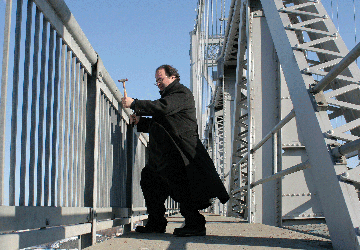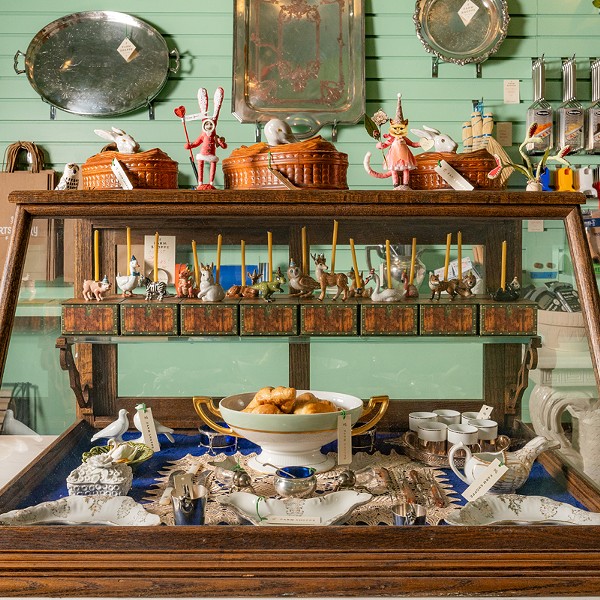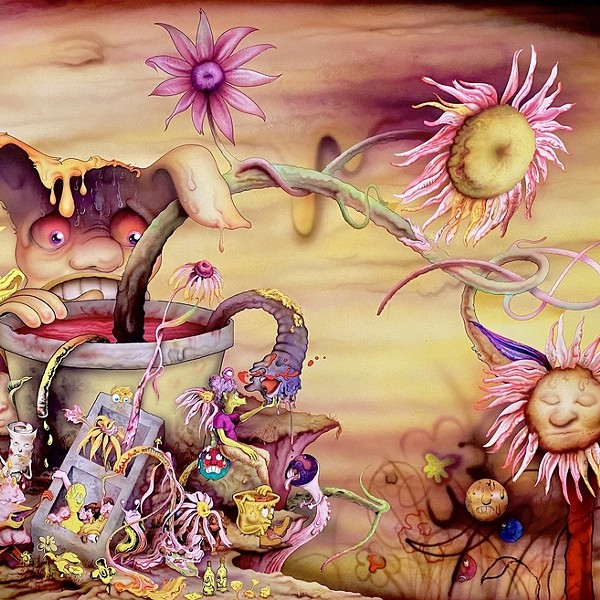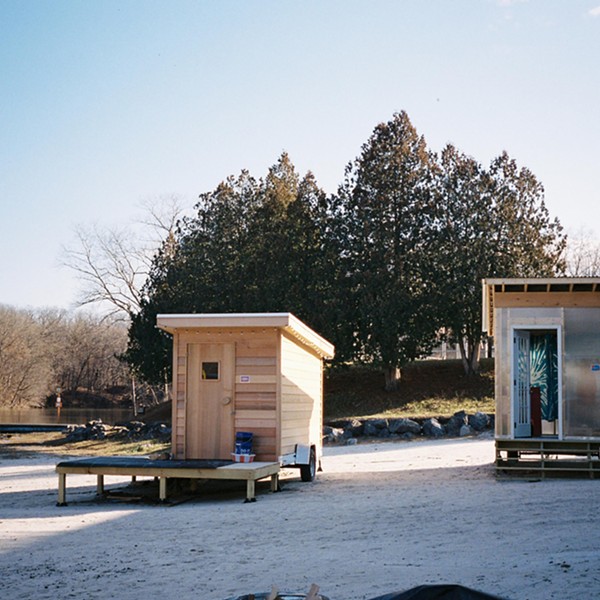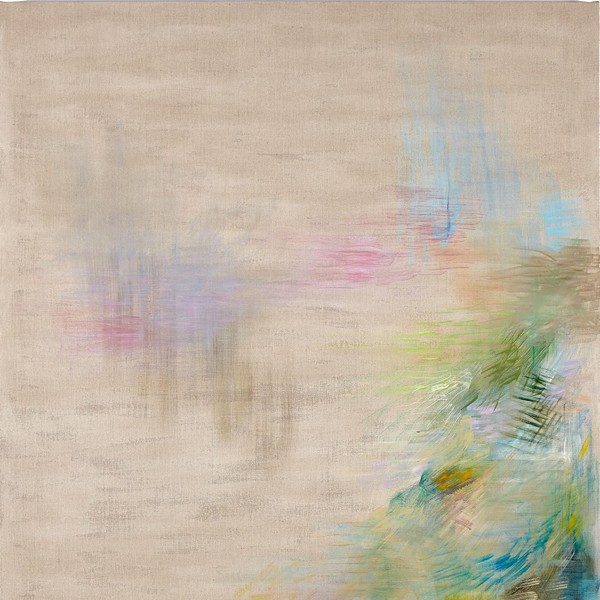The Franklin D. Roosevelt Mid-Hudson Bridge is a deck-truss, gravity-anchored suspension bridge designed by Polish immigrant Ralph Modjeski and completed in 1930 at a cost of $5,900,000. A formidable 3,000 feet long and 39 feet wide, it rises 135 feet above the Hudson River. Connecting the hamlet of Highland to the city of Poughkeepsie, it stands as a true marvel of modern engineering. It’s a vital commuter conduit, an instantly recognizable local landmark, and a…musical instrument?
“Sure, everything vibrates. Everything can be an instrument,” says composer Joseph Bertolozzi.
And with that, the swarthy, 49-year-old Beacon resident grabs a shoulder bag filled with various-sized hammers, mallets, and wooden dowels from the trunk of his compact and leads the way onto the bridge’s narrow pedestrian walk. The sun is out, but it’s early February and the temperature, in the low twenties, feels more like the teens thanks to the ferocious wind that crashes across the structure. On the water far below, massive ice floes float slowly and steadily downriver in an ever-shifting mosaic of shattered, football field-sized chunks. “Those cables up there, supporting the deck,” he says, pointing overhead. “Those are called suspender ropes. The longer ones have a short, hard sound, kind of like a punch. But the shorter ones actually sound like a bass guitar. And the drainage grates there by the walkway make a pretty weird sound when you scrape them.”
Pulling a pair of hammers from his bag, Bertolozzi snaps into a sumo-esque stance, feet spread far apart, and begins to bang out a rhythm on the handrail. His long coat flaps crazily in the heavy gusts. Trucks roar by not eight feet away. The occasional weather-braving runner and arctic-clad dog walker passes through, throwing Bertolozzi confused looks. But soon enough and, yes, indeed, all of the pinging and pounding begins to take the visible shape of a tune as his hammers work out a funky cadence, finding surprisingly melodic tones in the sweet spots at various points along the rail. At times the chiming crescendos actually sound somewhere between a Balinese gamelan and Verdi’s “Anvil Chorus.” Bertolozzi’s definitely made his point: The Mid-Hudson Bridge might just be the world’s largest percussion instrument.
In honor of the 400th anniversary of Henry Hudson’s discovery of the river, Bertolozzi has composed and recorded Bridge Music, a percussion suite that uses—exclusively—the sounds of the bridge itself. To prepare for the project, in 2007, with state-of-the-art contact microphones and recording gear run by audio engineer Ron Kuhnke and the help of a band of bridge laborers, Bertolozzi collected the sounds of his assorted implements striking hundreds of different parts of the bridge, not only the railings, suspender ropes, and other cables, but also various panels, spindles, fences, trusses—even the steel sign bearing its name. Using specialized software, he then arranged, notated, and mixed the samples into clinking, clanking, clanging, clattering—and undeniably catchy—pieces like “Bridge Funk,” “Rivet Gun,” and “Silver Rain” (the latter featuring the sound of several dozen pounds of steel shot cascading through a bridge drainage pipe). “I tried to find notes on the bridge to match the ‘do-re-mi’ scale,” Bertolozzi explains. “But while ‘do’ might be in one spot of the bridge, ‘re’ could be in a completely different place, like, 100 yards away. So finding everything and getting it all recorded was quite a challenge.”
There really are no exact precedents for Bridge Music. Yes, there have been works written that were inspired by the architectural magnificence of bridges: Tobias Picker’s 1983 concerto “Keys to the City” is meant to evoke the Brooklyn Bridge, and sound sculptor Bill Fontana’s “Harmonic Bridge” uses contact microphones that pick up the vibrations of the wind, pedestrians, and bicycles on London’s Millennium Bridge to transmit the sounds to the adjacent Tate Modern museum. And “Stahlversion,” from the German industrial band Einstürzende Neubaten’s 1984 LP Strategies Against Architecture, sports the sound of a bridge beam being pummeled amid the rest of the track’s cacophonous instrumentation. But none of those examples do what Bertolozzi’s does: use nothing more than the pure, untreated sounds of an actual bridge—with no added ornamentation of strings or other instruments—to make music.
Making music is something Bertolozzi knows much about. As a classically trained organist studying composition at the Accademia Chigiana in Siena, Italy, he gave a recital at the Vatican in 1979 and in the ’80s did two solo tours of Europe, one of them as a cultural ambassador of the US State Department. Becoming a percussionist in 2002, he developed the Bronze Collection, an arsenal of gongs, cymbals, and other instruments gathered from around the world on which he performed for audiences at two consecutive US Tennis Open tournaments. His symphonic works have been performed by the concert band of the US Military Academy at West Point and the Grammy-winning Chestnut Brass Company, and he’s given concerts with the Washington Metropolitan Philharmonic. But for Bertolozzi, a native Poughkeepise son raised in the very shadow of this latest and most massive instrument, Bridge Music is most certainly imbued with an extra-special resonance, if you will. So then just how did he first come to, er, hit on the idea of playing the bridge?







